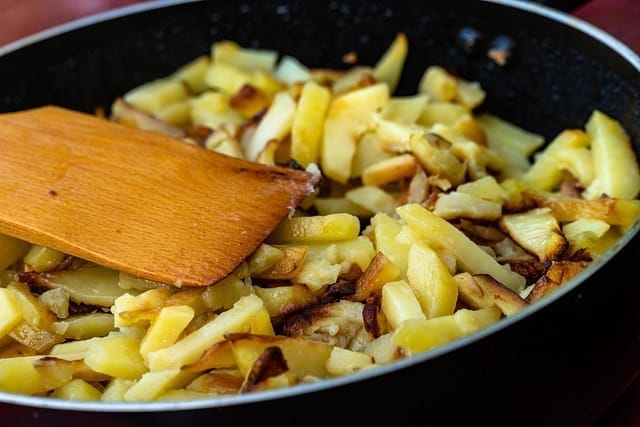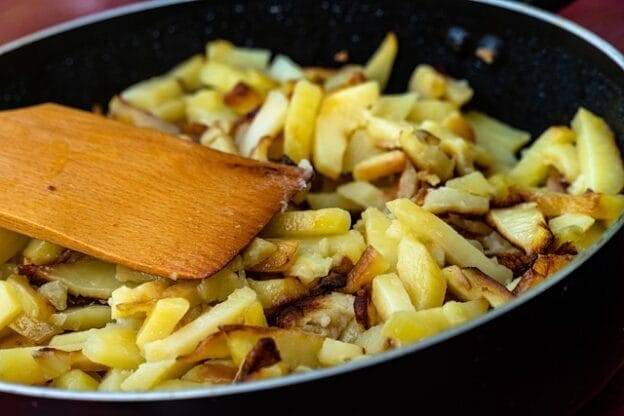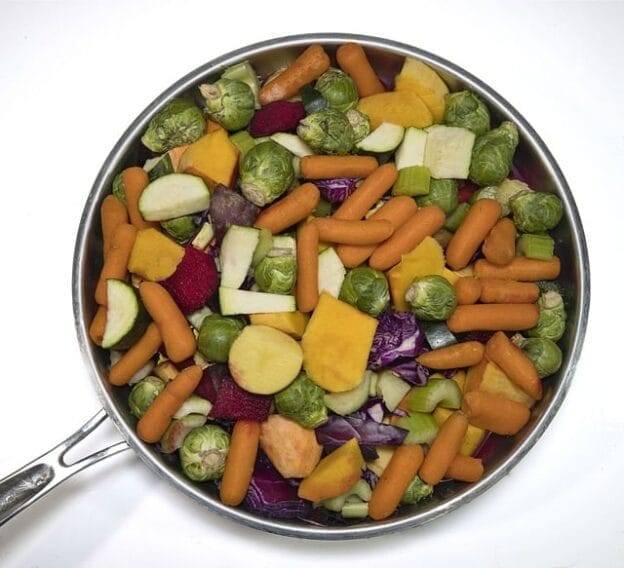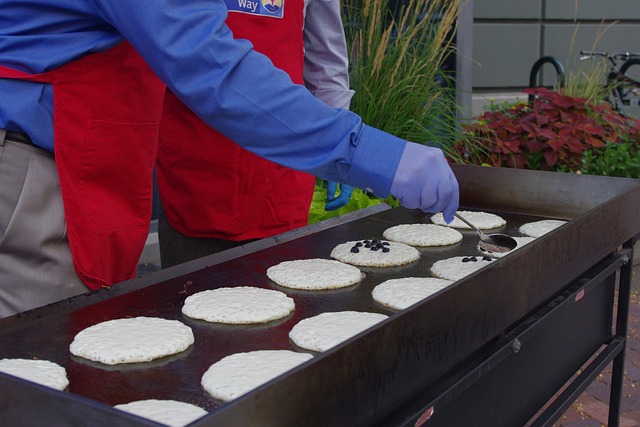When To Replace Your Non-stick Frying Pan?

When was the last time you took a close look at your non-stick frying pan? It’s a kitchen essential for so many of us, but how do you determine when it’s time to replace your non-stick frying pan? In this guide, we’ll assist you in figuring that out, ensuring you’re always cooking with quality cookware.

Understanding Non-Stick Frying Pans
Non-stick frying pans are beloved for their convenience. They make cooking a breeze, allowing food to slide off easily and minimizing the need for excess oil or butter. However, they do require care and attention to ensure they remain safe and effective over time.
The Composition of Non-Stick Pans
Non-stick pans are typically coated with polytetrafluoroethylene (PTFE), commonly known as Teflon, or other ceramic coatings. These materials allow for easy release of food but can degrade over time due to usage, heat exposure, and improper cleaning. Understanding this is the first step to knowing when to replace your frying pan.
Signs It’s Time to Say Goodbye
Recognizing the signs that your non-stick frying pan needs replacing can save you from cooking disasters and potential health risks. Let’s break down the various indicators that show it might be time to invest in a new one.
Scratches and Wear
One of the most obvious signs of a worn-out non-stick pan is visible scratches. If you see any scratches on the cooking surface, this is a red flag.
- Small Scratches: Minor scratches may not seem like a big deal, but they can impact how effectively food releases from the surface.
- Deep Scratches: If the scratches are deep enough that you can feel them when you run your finger over the surface, it’s time for a new pan. Damaged surfaces can lead to food sticking, and worse, they can release harmful particles into your food.
Peeling or Flaking Coating
If you notice that the non-stick coating is starting to chip, flake, or peel, your pan has reached the end of its life.
- Chipping: Small pieces of the coating coming off can end up in your food, which isn’t safe to consume.
- Peeling: Larger areas of peeling indicate that the coating is compromised, leading to ineffective non-stick properties.
Discoloration
A change in color is another telltale sign. Non-stick pans can discolor due to high heat or prolonged use, making them less effective and more unsightly.
- Brown or Black Stains: These are usually signs of burnt residue that may not come off with standard cleaning.
- Dull Appearance: A once-shiny surface that has become dull also suggests wear.
Warping
Warping can occur when pans are exposed to extreme temperatures. This change in shape can lead to uneven cooking and instability on your stovetop.
- Bend and Bow: If your pan is no longer flat, food may cook unevenly, leading to frustrating cooking experiences.
- Wobbly Bottom: A wobbly pan can also be a safety hazard, especially when working with hot oils.
Food Sticking
When food starts to stick to a non-stick pan, it’s a clear indication that something isn’t right.
- Increased Resistance: If you notice that your eggs or pancakes are no longer sliding out easily, and require aggressive scraping, this could be a sign of a worn coating.
- Residual Food: If the cooking surface has a tendency to retain food, it’s time to consider a replacement.
Health Considerations
Worrying about safety isn’t just limited to cooking performance. If your non-stick frying pan is degrading, there may be health implications tied to its use.
Chemicals in Non-Stick Coatings
The non-stick coatings on pans have been scrutinized over the years for their potential health risks. Most reputable brands have moved away from the most controversial chemicals associated with older non-stick pans, but it’s still important to be aware.
- Older Pans: If your pan is older, it may still contain PFOA (perfluorooctanoic acid). Make sure to check the product specifications if you’re unsure.
- Fresh Coating: Newer pans are often labeled as PFOA-free, so look for this certification when purchasing replacements.
Care and Maintenance Tips
Taking care of your non-stick frying pan can extend its life, but eventually, all cookware needs replacing. Here are some handy tips to maintain your non-stick pans.
Cooking Practices
- Use Low to Medium Heat: High heat can cause the coating to break down more quickly.
- Avoid Metal Utensils: Opt for silicone or wooden utensils that won’t scratch the surface.
Cleaning Techniques
- Gentle Cleaning: Avoid abrasive sponges and harsh chemicals. Instead, use a soft cloth or sponge with warm, soapy water.
- Routine Care: Clean your pan after every use to prevent buildup, which can lead to discoloration and sticking.
Storage Solutions
- Proper Stacking: If stacking your pans, place a cloth or paper towel between them to prevent scratching.
- Hanging Hooks: Alternatively, consider hanging them to avoid any contact with other surfaces.

Choosing the Right Replacement
If you’ve come to the conclusion that your frying pan needs replacing, you’re probably wondering what to look for in a new one.
Material Choices
- PTFE Coated Pans: Still popular for their convenience, but ensure they are PFOA-free.
- Ceramic Coated: A more recent alternative known for being free of controversial chemicals, but they can wear out more quickly than traditional non-stick pans.
Size and Shape
Consider what you’ll be cooking most often:
- Small (8-inch): Perfect for cooking eggs and small portions.
- Medium (10-12 inch): Versatile for most frying tasks.
- Large (14 inches and above): Great for family meals but may be heavier and harder to handle.
Brands and Customer Reviews
Be sure to check customer reviews or seek recommendations for reliable brands.
| Brand | Notable Features | Price Range |
|---|---|---|
| T-fal | Durable, affordable, PFOA-free | $20 – $60 |
| Calphalon | High-quality, metal utensil safe | $50 – $150 |
| GreenPan | Eco-friendly ceramic coating | $30 – $100 |
Conclusion: Keeping Your Kitchen Safe and Efficient
Recognizing when to replace your non-stick frying pan is essential not only for the quality of your meals but also for your safety. By understanding the signs of wear and tear, you can make an informed decision on when to invest in a new pan.
Remember, the goal is to have a kitchen space that facilitates delicious cooking while keeping you safe from harmful materials. Taking the time to inspect your cookware will ensure your kitchen remains a place of joy. Happy cooking!

